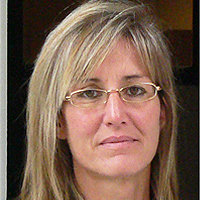Recent advances in pathophysiology and management of subglottic Hemangioma
Published on: 4th May, 2018
OCLC Number/Unique Identifier: 7814923433
Subglottic hemangioma is the most common vascular tumor of the larynx of pediatrics; in contrast, it is relatively uncommon, accounting for an estimated 1.5% of congenital laryngeal anomalies [1].
Kinematics and Electromyographic Analysis of Gait with Different Footwear
Published on: 24th January, 2017
OCLC Number/Unique Identifier: 7317654943
Kinematic analysis and surface electromyography are tools being used as important methods to evaluate the human gait and to analyze different types of footwear aiming modifications and adaptations to the human locomotor system, especially of the feet. The aim of the present study was to analyze through electromyography (EMG) the muscles tibialis anterior (TA) and gastrocnemius lateralis (GL) and gastrocnemius medialis (GM) and to capture digital images of the human gait in four different footware situations, barefoot with tennis, platform shoes and high heels. Twenty healthy women with a mean age of 22.6 years took part in this experiment, which was performed on a treadmill at a speed of 3.8 m/s. The results showed that shoes that do not allow a normal movement of the tarsal bones caused changes in the trajectory of the gait, which promotes a greater muscular movement. This study concluded that shoes closer to a normal position and allow greater mobility of the feet, decrease muscular demands, which in everyday situations cause less localized muscular fatigue.
In silico comparative analysis of HIV protease inhibitors effect on 2019-nCoV coronavirus 3CLpro
Published on: 3rd July, 2020
OCLC Number/Unique Identifier: 8627241132
The novel coronavirus 2019-nCoV has become a bane to mankind and spread worldwide and infected many people. Thus, there is an urgent need of a cure for the severe pneumonia disease caused by this virus. In this study, In silico comparative analysis has been done for HIV protease inhibitors on coronavirus 3CLpro protein which has shown the major interactions and common amino acid residues involved in interactions. The amino acid interaction analysis has revealed two amino acids ARG4, LYS5 to be the major amino acids targets among selected ligands. The binding energy analysis has also revealed Cobicistat as one of these best suited ligand for 3CLpro.
Effectiveness of Soft Tissue Mobilisation as an adjunct to the Conventional Therapy in patients with Ankylosing Spondylitis
Published on: 5th January, 2018
OCLC Number/Unique Identifier: 7869163621
Introduction: The HRMT (Human Resting Myofasial Tone) factor plays an important role to initiate the trigger the inflammation at the disease site in Ankylosing spondylitis (AS) as in all spondyloarthropathies. The incidence of fibromyalgia is higher in AS and a limiting factor to undergo the exercise program.
Aim of the study: To know the effectiveness of soft tissue mobilisation in patients with Ankylosing Spondylitis when it used as an adjuncts to the conventional exercises.
Methodology: 40 subjects were randomly assigned in to experimental and conventional group. Experimental group (n=20) received conventional exercises along with soft tissue mobilisation and the conventional group (n=20) received only conventional exercises (flexibility exercises, aerobic exercise and breathing exercise) for a period of 4 weeks, 5days/week.
Results: The result of the study showed that both the conventional and experimental groups improved significantly in stiffness, pain and physical function aspects after treatment. However the experimental group had a greater change as compared to conventional group.
Conclusion: The study demonstrates that soft tissue mobilisation has an effect when it used before the conventional exercise in patients with ankylosing spondylitis.
A Preliminary Laboratory Investigation of Methane Generation Potential from Brewery Wastewater using UASB Reactor
Published on: 17th May, 2017
OCLC Number/Unique Identifier: 7286358433
A preliminary laboratory study was conducted using upflow anaerobic sludge blanket (UASB) reactor to investigate the potential of methane generation from brewery wastewater. Brewery wastewater from a local brewery company was collected and used in the experiments. The experiments were run for 15 days. The rate of methane production was about 5.32 L per kg of chemical oxygen demand (COD) removed per day. The pH reduction in the experimental reactor limited the ability of gas production and is likely the result of the temperature at which the experiments were conducted.
Use of Geosynthetic materials in solid waste landfill design: A review of geosynthetic related stability issues
Published on: 22nd June, 2018
OCLC Number/Unique Identifier: 7795967156
Geosynthetics used in landfills provides a technical and economic advantages over traditional clay liners. It may create stability issue and even lead to landfill failure due to its low interface or internal shear strength if improperly designed and/or constructed. The most common failure mechanism in geosynthetic-lined landfills is transitional failure involving waste and bottom liner (deep-seated failure) or only final cover system (shallow failure). Shear strengths of geosynthetic-geosynthetic and geosynthetic-soil have a wide range of variations. Shear strengths of interface from literature may be used in preliminary design. For final design, site-specific interface shear strengths shall be used. Internal shear strengths of unreinforced geosynthetic clay liner (GCL) are less than those of reinforced GCLs. Unreinforced GCLs are not recommended for slopes steeper than 1:10 (1 Vertical and 10 Horizontal). Peak shear strength of interface and internal GCLs can be used in bottom liner; residual shear strength of interface and internal GCLs shall be used for geosynthetic placed along the slopes. Site-specific shear strengths of waste are recommended to be used in the design. Landfill failure could be triggered by static loadings including excessive leachate, pore pressure above the bottom liners, gas pressure, and excessive wetness of the geomembrane-GCL, and earthquake loading. The factor of safety of 1.5 is recommended for static loading and 1.0 for earthquake loading. A higher factor of safety is recommended if a failure could have a catastrophic effect on human health or the environment, and if large uncertainty exists in input parameters to calculate the factors of safety. The main objective of this review article is to provide a comprehensive knowledge of slope failure mechanisms, causes, and probable remedies in one place.
Cerebral Autoregulation-Directed Therapy in Adults with Non-Traumatic Brain Injury in Neuro-Critical Care: A Scoping Review
Published on: 15th May, 2025
Cerebral Autoregulation (CA)-directed therapy, or optimal cerebral perfusion pressure (CPPopt)-targeted therapy, is a tailored bedside method of resuscitation used in critical care that aims to achieve and maintain the CPPopt, to fit the precise cerebral hemodynamics and metabolic demand. Different processes and multiple tools are available to conduct a CA-directed therapy in acute brain-damaged adult admitted into critical care settings, but literature is limited and primarily focused on traumatic brain injury; however, for other brain conditions. By this scope review, we aim to describe the main procedures used by authors to achieve a CA-directed therapy, as well as its acquisition methods and its usefulness in acute non-traumatic brain-damaged adult in neurocritical care.
A Systematic Review of Advancement in Gait Analysis Techniques
Published on: 16th May, 2025
The examination and the survey of how a person moves, particularly the way of life of walking and running. It entails studying and quantifying a person's gait in terms of their stride length, cadence, foot position, and movement of various body joints. Wearable technology makes it possible to monitor the gait pattern continually while moving about freely. The direction line, gait line, foot line, foot angle, principle line, step length, step breadth, and displacement value obtained from the gyro and accelerated sensors coupled to the shank and thigh are all used to analyze the gait pattern. There has been a lot of research on this method of recognizing people by the way they walk.The two most crucial facts are that OpenPose, a 2D multi-person posture estimation library, can detect 135 critical body locations without the requirement for fiducial markers, and that smartphone cameras can detect the gait pattern without the use of physical markers. In addition, lower extremity sagittal joint angles, spatiotemporal gait parameters, and timings of gait events were independently determined for motion capture. Gait analysis systems use portable, readily available cameras to measure gait characteristics. The pace of gait, length of steps, time of steps, cadence of steps, and the period of stance are the most crucial factors. Recently, the top standard for the examination of gait was used to evaluate the schemes based on two camera usage to evaluate the framework of different gait patterns.The precision of the examination of SCA is being increased by data scientists through the development of AI-based computer algorithms. To increase individualization, Bertillon measured the body and faces of several convicts in 1883.
Additional Gold Recovery from Tailing Waste By Ion Exchange Resins
Published on: 30th August, 2024
The article describes the gamma activation analysis method used to determine the gold content in rock samples using the Aura measuring complex. The physicochemical basis of gold extraction in the process of cyanide leaching is considered. The technology for extracting gold from solutions of tailing waste “ponds” of tailings dumps of hydrometallurgical plants of the Joint Stock Company “Navoi Mining and Metallurgical Combine” (JSC NMMC) is presented. It has been shown that in the dynamic mode of sorption of tailing waste solutions acidified to pH = 3.3÷3.5 through AM-2B and VP-1P ion exchange resins, gold is sorbed on the AM-2B anion exchanger up to 3.9 mg/g and on the VP-1P anion exchanger up to 1.5 mg/g. It has been shown that when solutions of tailing waste are exposed to ammonia, ammonia complex compounds of base metal impurities are formed, which decompose, while the gold cyanide complex does not decompose and is sorbed on the AM-2B ion exchange resin up to 3.0 mg/g. The mechanisms of the chemical reactions of the process of extracting gold from tailing waste and the technological scheme of the installation for extracting gold from solutions of the tailing waste “pond” are presented.
Free Radicals, Antioxidants and Redox Potential
Published on: 29th May, 2025
The role of free radicals and antioxidants is often underestimated despite their involvement in key metabolic processes, although they participate in many important metabolic processes in the life of humans, animals and plants. Their quantity and quality differ from each other, which is not respected. Each cell is attacked approximately 10,000 times by free radicals. Oxidative stress is the cause of many problems, especially in viral diseases. Monitoring of redox potentials in body fluids is usually not carried out. Viral replication is influenced by oxidative energy, derived from either host metabolism or free radical activity, which is supplied by oxidation by free radicals or the host. Nucleic acid mutations due to the effect of free radicals can be the cause of carcinomas, and possible defense against mutations could help eradicate dangerous viruses. The importance of malondialdehyde and antibodies against it is discussed. Eliminating free radicals, reducing lipoperoxidation, and protecting against environmental oxidative stress are important factors for human health.Study objective: To highlight the importance of free radicals, antioxidants and redox potentials for patient diagnosis and therapy.Methods: This study synthesizes findings from multiple published sources, including our own research.Results: Findings highlight the role of free radicals in oxidative stress, DNA damage, and viral replication, with redox potential (ORP) and Malondialdehyde (MDA) identified as key diagnostic markers.Conclusion: Monitoring oxidative balance and targeting free radical activity are essential for preventing cellular damage and improving clinical outcomes in oxidative stress-related diseases.




